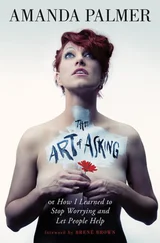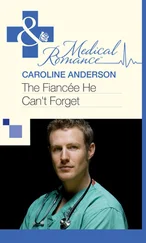Twenge’s theories touched a cultural nerve. The press was already rife with reports of overinvolved parents who coddled their children, chewing out their sons’ or daughters’ teachers for dishing out bad grades or calling during job interviews to speak to their prospective employers. Headlines buzzed with shocking tales of millennials’ sense of entitlement: disgruntled administrative assistants who slacked off at work, convinced that secretarial duties were beneath them; entry-level workers who held court when they should have been listening to their boss; new hires who spent entire meetings glued to their smartphones, texting friends instead of taking notes. And now, it seemed, Twenge had provided an explanation for all the bad behavior.
Her conclusions, however, have drawn fire right from the start—and the evidence she marshals to support the idea of a narcissism epidemic has come under the heaviest attack. The NPI, on which Twenge draws so heavily, is a deeply flawed measure. Under its design, agreeing with statements that reflect even admirable traits can inch people higher up the narcissism scale. For example, picking “I am assertive” and “I would prefer to be a leader” counts as unhealthy even though these qualities have been linked repeatedly in decades of research to high self-esteem and happy relationships. People who simply enjoy speaking their mind or being in charge are clearly different from narcissists who enjoy manipulation and lies. But the NPI makes no distinction. More people checking these salutary statements could easily account for millennials’ rising NPI scores through the years, and that’s what some studies indicate has happened.
Second, numerous large-scale studies, including one of nearly half a million high school students conducted between 1976 and 2006, have found little or no psychological difference between millennials and previous generations (apart from a rise in self-confidence). In fact, one study of thousands of students suggests that millennials express greater altruism and concern about the world as a whole than do previous generations, prompting psychologist Jeffrey Arnett, of Clark University to call them “GenerationWe.” The results of a 2010 Pew Research Report, surveying a nationally representative sample of several thousand millennials, also stands in stark contrast to Twenge’s findings. Millennials, the Pew authors concluded, get along well with their parents, respect their elders, value marriage and family far over career and success, and are “confident, self-expressive, and open to change”—hardly the portrait of entitled brats.
But there’s another far more troubling problem with using the NPI to declare an epidemic: we have no way of knowing whether or not people scored as “narcissists” remain so over time. No study has followed up on these thousands of college students after they graduated. Furthermore, just about every theory of adolescence and early adulthood presumes that the young are only temporarily a self-absorbed bunch, and research seems to support that view. We used to think that was a good thing: the bright-faced idealism of youth. The young believe themselves capable of anything; they’re ready to take over the world and make it a better place. Most of us, in our less cynical moments, appreciate their ostentatious energy. But just as with other temporary bouts of narcissism brought on by specific life stages, such enthusiasm eventually fades. As we approach our thirties, most of us come back down to earth, and our self-importance, and yes—self-absorption—give way to the realities of life.
Though we currently seem obsessed with Kernberg’s dark narcissism, the pervasive better than average effect—where healthy people do appear to feel special—suggests that Kohut’s benign view is the right one.
We need our grandiosity at times to feel happy and healthy. And a growing body of recent research concludes that a little narcissism, in adolescence, helps the young survive the Sturm und Drang of youth; moderate teenage narcissists are less anxious and depressed and have far better relationships than their low and high narcissism peers. Likewise, corporate leaders with moderate narcissism are rated by their employees as far more effective than those with too little or too much. And my own research with my colleagues is pointing in the same direction: only people who never feel special or feel special all the time pose a threat to themselves and the world.
The difference between narcissists and the rest of us is one of degree, not kind. To better understand that, we need to explore the full range of the narcissism spectrum.
3 3 From 0 to 10: Understanding the Spectrum 4 The Narcissism Test: How Narcissistic Are You? PART II: ORIGINS: HEALTHY AND UNHEALTHY NARCISSISM 5 Root Causes: The Making of Echoists and Narcissists 6 Echoism and Narcissism: From Bad to Worse PART III: RECOGNIZING AND COPING WITH UNHEALTHY NARCISSISM 7 Warning Signs: Staying Alert for Narcissists 8 Change and Recovery: Dealing with Lovers, Family, and Friends 9 Coping and Thriving: Dealing with Colleagues and Bosses PART IV: PROMOTING HEALTHY NARCISSISM 10 Advice for Parents: Raising a Confident, Caring Child 11 SoWe: The Healthy Use of Social Media 12 A Passionate Life: The Ultimate Gift of Healthy Narcissism Resources References List of Searchable Terms Acknowledgments About the Author About the Publisher
From 0 to 10 3 From 0 to 10: Understanding the Spectrum 4 The Narcissism Test: How Narcissistic Are You? PART II: ORIGINS: HEALTHY AND UNHEALTHY NARCISSISM 5 Root Causes: The Making of Echoists and Narcissists 6 Echoism and Narcissism: From Bad to Worse PART III: RECOGNIZING AND COPING WITH UNHEALTHY NARCISSISM 7 Warning Signs: Staying Alert for Narcissists 8 Change and Recovery: Dealing with Lovers, Family, and Friends 9 Coping and Thriving: Dealing with Colleagues and Bosses PART IV: PROMOTING HEALTHY NARCISSISM 10 Advice for Parents: Raising a Confident, Caring Child 11 SoWe: The Healthy Use of Social Media 12 A Passionate Life: The Ultimate Gift of Healthy Narcissism Resources References List of Searchable Terms Acknowledgments About the Author About the Publisher
Understanding the Spectrum
When my daughters were in kindergarten, they loved to visit the Cambridge Museum of Science. One exhibit, in particular, fascinated them. It consisted of a small tile with a lamp shining down on it. By turning a knob on the lamp, they could change the color of the light. But each time the lamp changed color, so did the tile. What seemed to be a bright red tile, a few moments ago, would deepen into purple, then turn yellow, then green, and on and on. At the edges, some colors would blend, making it hard to discern any one color at a time. A seemingly trivial question, What color is the tile?, suddenly became far more complicated.
We tend to like clear, distinct categories—it makes life easier to impose order on the world. The tile is either green or red, but it can’t be both. Similarly, we like to think in stark extremes—full or empty, black or white, good or bad. But as soon as we start looking more closely at our world, the categories blur. Even the paint on our walls seems to change color throughout the day, depending on the directness and intensity of the light. There are gradations and nuance to almost everything in life, including attitude, emotion, and personality.
So instead of regarding narcissism in all or nothing terms, imagine a line stretching from 0 to 10, like the one below, with the desire to feel special slowly growing as we move from left to right.
The Narcissism Spectrum
| 0 |
1 |
2 |
3 |
4 |
5 |
6 |
7 |
8 |
9 |
10 |
| abstinence |
habit |
moderation |
habit |
addiction |
Life at either of the extremes, whether at 0 or 10, isn’t a particularly healthy place to be. At 0 people never enjoy feeling special in anyway. Perhaps they never have. At first, this might sound healthy. Most of us have it drummed into our heads, whether by religion or family or culture, that anything even approaching the desire for special treatment or attention is bad. Our distaste is epitomized by the question What makes you so special? We all recognize the reprimand in the rhetoric. What people really mean is You’re acting like you’re special. Stop it! In most cultures around the world, selflessness is often held up as the ultimate virtue. No one has a right to feel special anyway, the argument goes, so we should celebrate people who never indulge the feeling.
Читать дальше












